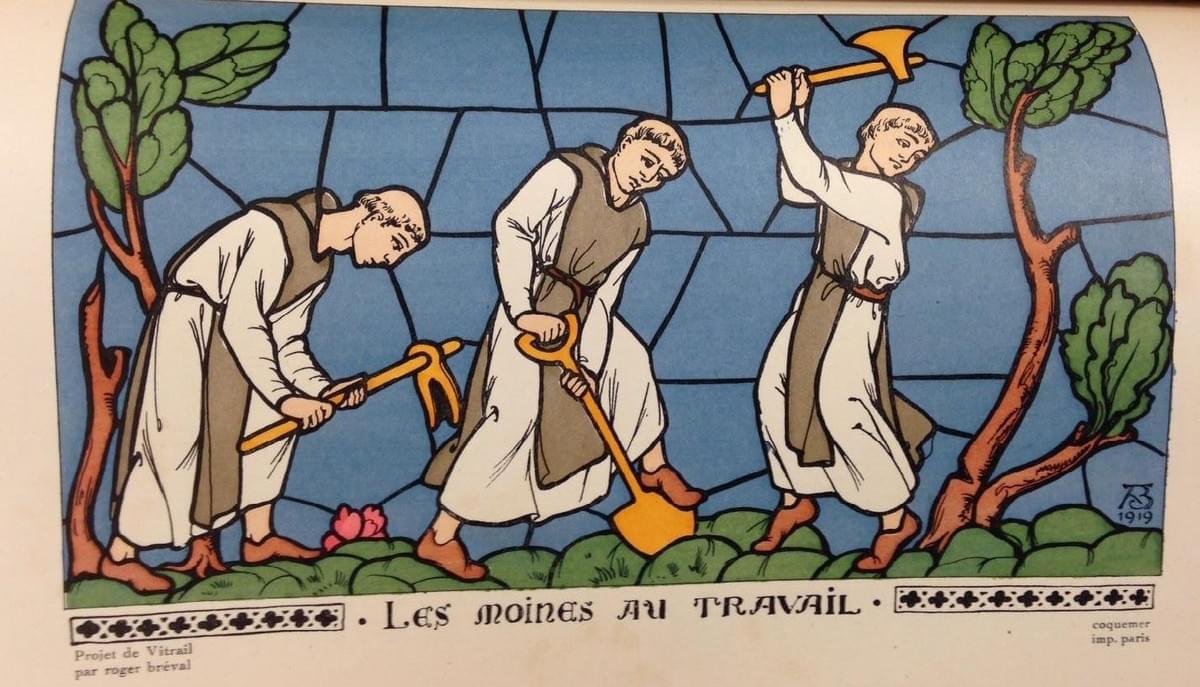
- …
- …

An Irish monk who brought faith to the valley
Borrowdale has a rich history of Christianity dating from the 7th Century.
It all began when St Herbert, a monk from Ireland, came to live on an island on Derwentwater that now bears his name. He lived a simple and ascetic life, dedicating himself to prayer and contemplation.
He also spent time preaching to the local people and converting them to Christianity.
Medieval times

Monastic farming
In medieval times, the whole area was under monastic influence. The great Cistercian abbeys of Furness and Fountains owned land in the valley, and they played a significant role in shaping the landscape and lives of the people there.
The land was drained and cultivated for sheep pasture, as wool was a primary product of the abbeys. The monks also grew barley, oats and rye, and stored their grain in a 'grangia' thus giving the village of Grange its name.
Furness Abbey controlled the land in Borrowdale (from Sty Head to Derwentwater) while Langstrath, Stonethwaite and Watendlath were managed by Fountains Abbey.
The monks' work
The monks caught fish from the lake, produced salt from the saline waters at Manesty and mined for minerals on the surrounding fells. Fountains Abbey also ran a successful dairy farm (or vaccary) at Stonethwaite and smelted iron on Smithymire Island. However, all that changed in the 1530s when King Henry VIII dissolved the monasteries and the land reverted to the Crown. The monastic influence in Borrowdale came to an end, but the legacy of Christianity lived on through the local churches.
The Church in Borrowdale in more modern times
St Andrew’s Church

Up to the 1680s, the parishioners of Borrowdale had to travel nearly 5 miles to Crosthwaite Church in Keswick for services. The chapel of St Andrew’s was built in 1687 as a ‘chapel of ease’ to save them having to make this journey, but it wasn’t until 1765 that the church was granted a churchyard to relieve parishioners of the ‘great inconvenience, labour and expense’ of carrying the dead to Crosthwaite. There are memorials here to Sarah Youdale (the ‘Queen of Borrowdale’), Bob Graham (holder of many fell-running records) and Margaret Heathcote (builder of Holy Trinity Church).
Sarah Youdale (1768/9−1869), the Queen of Borrowdale, lived to be over 100 years old. She only ever left the valley once and that was to go to Whitehaven. She lived a self-sufficient lifestyle − making her own clothes, curing meat for the winter and always attending church every Sunday.
Joss Harry of Watendlath also never missed a service at St Andrew’s. Whatever the weather, he and his dog walked over the fell from Watendlath every Sunday. When the old man died, it is said that the dog continued to walk to the church for several Sundays afterwards.
Holy Trinity Church
As a young girl, Margaret Heathcote stood on Grange Bridge in 1819 and commented on how good it would be to have a church in the village. Over the next 40 years she began to fulfil her dream by raising enough money to build Holy Trinity Church (consecrated in 1861).
The church is built out of green Lakeland slate and has an attractive interior with dog-tooth moulding on the ceiling and hand-painted boards on the Ten Commandments, said to have been painted by Margaret herself. And, if you visit the Borrowdale Gates Hotel, you will be in the very house that Margaret built as her residence and where she had her own private chapel and ran a school for local children.
The original bell at Holy Trinity Church was said to have been made of glass! This was replaced by one of iron, but its sound was so tuneless that in exasperation a third bell was given to the church by a neighbour.




